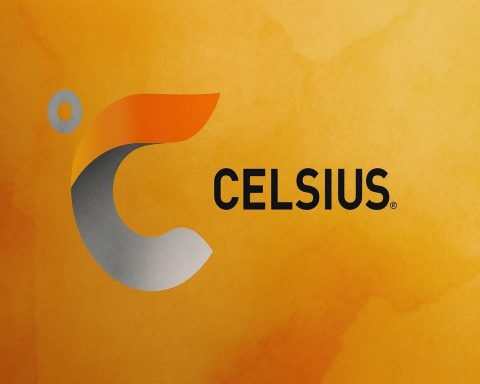Executive snapshot
- Global tide is turning from “guidelines” to binding law. The EU’s AI Act entered into force in August 2024 and starts banning “unacceptable-risk” systems in February 2025, with graduated duties for high-risk and general-purpose (foundation) models kicking in through 2026. [1] [2]
- The United States is governing by executive action while Congress stalls. President Biden’s 2024 Executive Order and the launch of the U.S. AI Safety Institute (AISI) give agencies new testing, reporting and export-control powers, but statutory bills remain grid-locked and could shift under a new administration. [3] [4]
- China, the first mover on generative-AI rules (July 2023), is tightening real-name registration and security reviews for models serving the public. New draft amendments extend liability to fine-tune developers. [5]
- “Middle-way” regimes (U.K., Japan, Canada, India) rely on agile, sector regulators plus safety-testing institutes. The U.K. AI Safety Institute’s open-source Inspect platform and G7’s Hiroshima AI Process Code of Conduct aim to keep rules interoperable. [6] [7] [8]
- Companies are self-policing to get ahead of enforcement. Microsoft’s Responsible AI Standard and new safety leaderboard on Azure, Google’s 2025 Responsible AI Progress Report, and OpenAI’s continually updated usage policies show the private sector converging on documentation, red-teaming, and watermarking. [9] [10] [11] [12]
1. Where the law stands today (mid-2025)
| Jurisdiction | Binding instrument | Status & key 2025 deadlines | Direct requirements for generative / foundation models |
|---|---|---|---|
| European Union | Regulation (EU) 2024/1689 – “AI Act” | Entered into force 1 Aug 2024; prohibitions apply 2 Feb 2025; general-purpose model rules kick in 2 Aug 2025 and most other obligations 2 Aug 2026 [13] [14] | Article 53 compels model cards, training-data disclosure, incident reporting and adversarial testing for any model placed on the EU market [15] |
| United States | Oct 2024 AI Executive Order + agency rules (NIST, Commerce BIS) | Executive action only (Congress still debating Algorithmic Accountability and Chip Security Acts) [16] [17] | Frontier-model providers over ~10^15 FLOPs must file capability & red-team reports with the new U.S. AI Safety Institute (AISI); BIS can impose licence-style compute controls |
| China | Interim Measures on Generative-AI Services (Jul 2023) | Fully enforced; draft 2025 amendment adds mandatory real-name registration for all prompts [18] [19] | Security review, watermarking, provenance filing and content “positive values” filter before public release |
| United Kingdom | Pro-Innovation AI White Paper + statutory guidance & AI Safety Institute | Non-statutory “agile” regime; Inspect evaluation platform released 2024 and updated 2025 [20] [21] | Voluntary risk-class mapping; regulators (FCA, MHRA, Ofcom…) can demand Inspect test results for high-impact models |
| G7 / Japan | Hiroshima AI Process – Code of Conduct (Nov 2024) | Reviewed annually; 31 commitments on transparency, safety testing, and watermarking [22] | Acts as an interoperability bridge between EU Article 53 and U.S. executive rules |
| United Nations | High-Level Advisory Body “Blueprint” (Dec 2024) | Draft treaty outline for frontier-AI safety labs under discussion; target adoption 2027 [23] | Would standardise bio-risk and extreme-capability tests across INASI member labs |
2. Corporate self-regulation keeps racing the regulators
| Company | 2024-25 governance milestone | Why it matters |
|---|---|---|
| Microsoft | Responsible AI Standard v2, plus Azure safety-score leaderboard (June 2025) [24] | Bakes red-team metrics into cloud procurement dashboards—effectively “shadow compliance” with EU Art. 53. |
| Responsible AI Progress Report (Feb 2025) details full-stack governance & Gemini SynthID watermark rollout [25] | Shows how ISO/IEC 42001 and NIST AI-RMF mapping can substitute for yet-to-arrive U.S. statutes. | |
| OpenAI | Usage-Policy overhaul 29 Jan 2025—adds blanket bans on illicit bio-threat instructions and clarifies data provenance duties [26] | Aligns voluntary policy wording almost line-for-line with EU “unacceptable-risk” and U.S. EO language. |
Adoption trend: 71 % of large firms already use generative-AI in at least one business function, and governance is quickly centralising at C-suite level. [27]
3. Cross-cutting policy themes emerging in 2025
| Theme | Concrete rule examples | Strategic signal |
|---|---|---|
| Foundation-model transparency | EU Art 53 tech docs; U.S. model-weight “passports” (draft BIS rule); China’s training-data filings [28] [29] [30] | Creates a de facto global disclosure baseline—sets the playing field for copyright and safety suits. |
| Compute & export controls | New Chip Security Act proposes on-chip geo-tracking; BIS enforces tighter Huawei chip caps (June 2025) [31] [32] | Shifts safety debate from software to hardware choke-points. |
| Independent safety evaluation | UK Inspect platform; AISI + INASI joint benchmarks; Azure safety leaderboard [33] [34] [35] | Third-party testing labs become gatekeepers for market access and insurance underwriting. |
| Synthetic-content provenance | G7 watermark pledge; Google SynthID; EU AI Act Annex XI metadata duties [36] [37] [38] | Core to 2026-27 election-integrity playbooks worldwide. |
| Environmental footprint | 2024 OECD AI Principles revision adds explicit sustainability clause, pressuring future EU delegated acts to mandate energy audits [39] | ESG funds and regulators align on requiring carbon/water disclosures for models beyond ~10^14 FLOPs. |
4. Risk radar & timeline (2025 → 2028)
| Date | Event to watch | Impact |
|---|---|---|
| 2 Aug 2025 (EU) | General-purpose model duties become enforceable | First wave of model-card and copyright-mitigation litigation expected. [40] |
| Q4 2025 (US) | Congress re-takes Algorithmic Accountability & privacy bills after 2025 election | Could flip U.S. regime from executive guidance to statute; uncertainty for multi-national compliance. [41] |
| 2026 (China) | Permanent Generative-AI Law likely replaces 2023 Interim Measures | Higher fines & extended liability for fine-tune developers. [42] |
| 2027 (UN/OECD) | Target date for UN “frontier-AI safety” convention; OECD plans next Principles review | Would harmonise bio-risk tests and sustainability metrics across signatories. [43] [44] |
| 2027-28 (Gartner) | Up to 30 % of Gen-AI pilots abandoned post-POC for lack of risk controls [45] | Compliance cost becomes a make-or-break variable in ROI models. |
5. Strategic guidance
For product & engineering teams
- Map every use-case against the EU four-tier risk ladder; build “red routes” for any feature that could drift into high-risk territory.
- Treat model cards as living documents version-controlled with code—most future tenders will ask for them.
- Add a compute-budget gate (and its carbon price) to your architecture review board.
For policy & legal teams
- Participate early in UK–US INASI benchmark design to avoid divergent test suites.
- Negotiate audit-right clauses with cloud providers aligned to ISO/IEC 42001 + NIST AI-RMF.
- Plan for cross-border data-transfer red-lines: China’s provenance filings can force data localisation, while EU expects data-set disclosure.
For investors & insurers
- Discount valuations for vendors lacking a documented AI-governance framework.
- Expect a growth market in reg-tech supplying continuous model-monitoring & incident-report feeds.
Bottom line
Generative-AI governance has moved from voluntary principles to hard, enforceable law in less than three years. 2025-26 is the compliance grace period; by 2027 regulators will have fine schedules and test labs ready. The winners will be builders who design for governance—turning safety, transparency and sustainability into competitive advantage rather than last-minute cost.
References
1. www.europarl.europa.eu, 2. transcend.io, 3. www.whitehouse.gov, 4. www.nist.gov, 5. www.chinalawtranslate.com, 6. www.gov.uk, 7. www.gov.uk, 8. www.japan.go.jp, 9. www.microsoft.com, 10. www.ft.com, 11. ai.google, 12. openai.com, 13. digital-strategy.ec.europa.eu, 14. digital-strategy.ec.europa.eu, 15. artificialintelligenceact.eu, 16. www.insidegovernmentcontracts.com, 17. www.reuters.com, 18. www.chinalawtranslate.com, 19. www.airuniversity.af.edu, 20. inspect.aisi.org.uk, 21. www.gov.uk, 22. www.csis.org, 23. www.un.org, 24. www.microsoft.com, 25. ai.google, 26. openai.com, 27. www.mckinsey.com, 28. artificialintelligenceact.eu, 29. www.insidegovernmentcontracts.com, 30. www.chinalawtranslate.com, 31. www.reuters.com, 32. www.reuters.com, 33. www.gov.uk, 34. www.insidegovernmentcontracts.com, 35. www.microsoft.com, 36. www.csis.org, 37. ai.google, 38. artificialintelligenceact.eu, 39. www.oecd.org, 40. digital-strategy.ec.europa.eu, 41. www.insidegovernmentcontracts.com, 42. www.chinalawtranslate.com, 43. www.un.org, 44. www.oecd.org, 45. www.gartner.com










